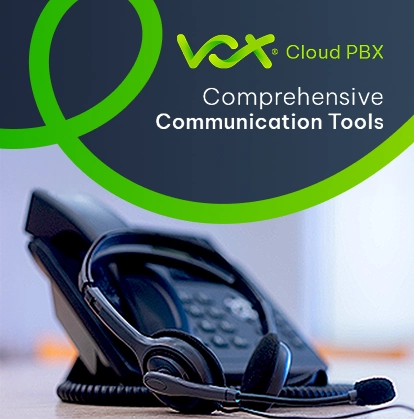Connectivity doesn’t have to be a city thing; it can be an anywhere and anytime thing with the right technology in place
The United Nations believes that connectivity should be a human right. It’s the thread that connects people to education, opportunities, information and insights. And it is the golden key that unlocks the door to both personal and business growth. Yet, there are many parts of South Africa that are still not connected to the internet. The country ranks 68th on the 2021 Digital Quality of Life Index and, even though it’s higher than many other countries listed in this report, it still has to overcome legacy infrastructure and vast rural areas to bring people and connections together. While there are more than 41 million active internet users in the country, there’s a need to find smart solutions that can connect more people to the internet, social media and cool digital tools. As Kathleen Janse van Rensburg, Satellite Product Manager at Vox points out, there are limitations around fibre implementations with poor access in many areas that still need connectivity, particularly farmlands and agricultural spreads.
“There is a vast unconnected area in South Africa and satellite can play a significant role in changing this profile,” she says. “Good satellite coverage can transform access to connectivity across multiple environments, and it can extend to areas just outside the city or to smaller towns or suburbs that have yet to receive reliable fibre.”
There are several different forms of connectivity available to the market at the moment. LTE is a fixed wireless connection that uses fibre or an internet source that leverages cell towers and mobile networks and thrives in areas with solid mobile phone reception. Satellite offers impressive coverage in almost any location which makes it very accessible for people who have limited fibre or mobile network connectivity options. Satellite may have some limitations but proves to be an effective communication medium where Fibre and LTE are not yet available.
From farmers to rural towns to schools, connectivity is an essential tool to support their businesses and their lives. Farmers want reliable connectivity to ensure that their smart systems are working or to gain access to data, and to stream, socialise and network online. There are also many schools and educational institutions in these areas with no or poor internet connectivity. They can’t simply check online for a project or do research by throwing search terms into Google. They rely on creaking tech and limited connectivity that satellite can solve. Connectivity is a right, not a privilege, and so there has to be a bold move towards technology that can enable this.
“The downfall of entry level satellites is that they do not support VPN (virtual private network) services. To provide VPN support on satellite will cost a lot more than what the average consumer can afford, however, working from home is still possible,” says Janse van Rensburg. “Satellite offers users a high level of resilience that ensures consistent connectivity, even in the event of a power failure.”
Satellite is reliable and cost-effective, plus it’s the ultimate digital nomad. It can be implemented in the rural areas and still provide reliable connectivity. It can also be connected to solar panels so that connectivity remains in play during load-shedding which is, in the current climate, an added bonus, particularly for schools and farms that rely on it. Then, moving back into urban or peri-urban areas that opt into satellite, there are the benefits of high-speed connectivity at a really good price point. After all, for most users, cost comes hand-in-hand with connectivity as nobody wants to pay exorbitant fees for a service that should be readily available.
“Satellite in the suburbs can be a smart alternative as it’s an always-on connection. It offers users a foolproof technology that delivers what they need, even during load-shedding,” says Janse van Rensburg. “While you need a slightly more complex setup than other solutions, it can be kept up and running using a basic generator and UPS backup or inverter when the power goes off.”
“Satellite is a perfect and reliable connectivity solution,” concludes Janse van Rensburg. “It brings digital to remote and rural areas, allows people and places to connect, and removes the limitations imposed by distance and lack of infrastructure. In a few short steps, it provides Internet connectivity, no matter how remote you are.”












